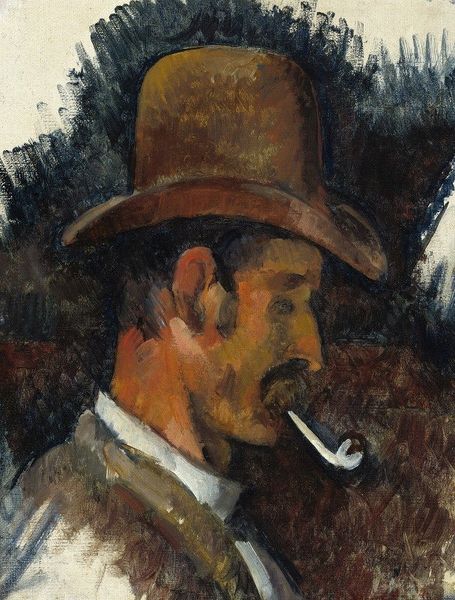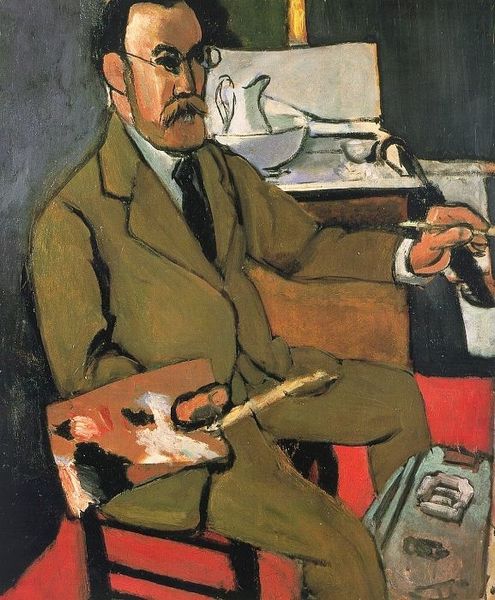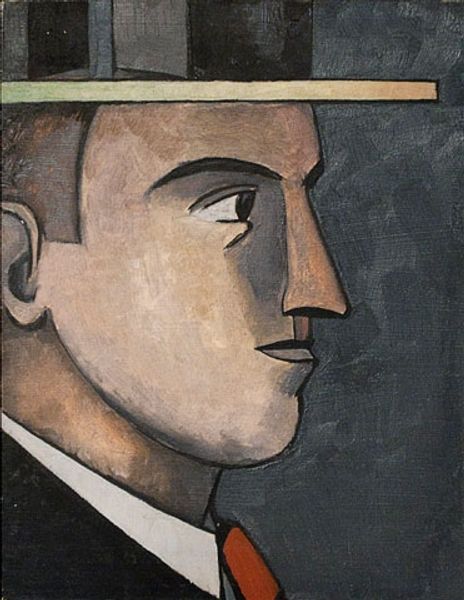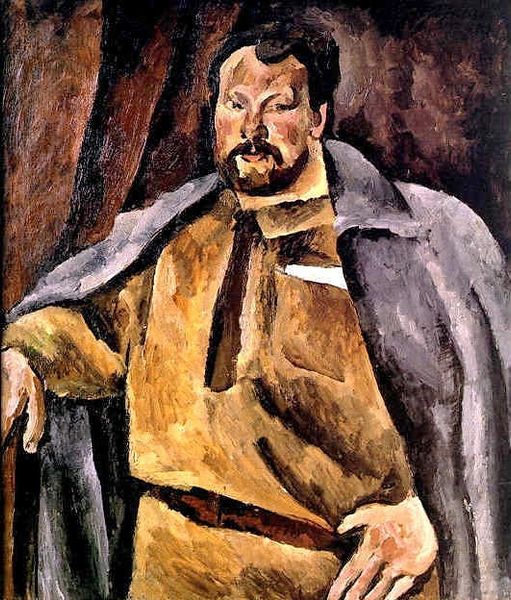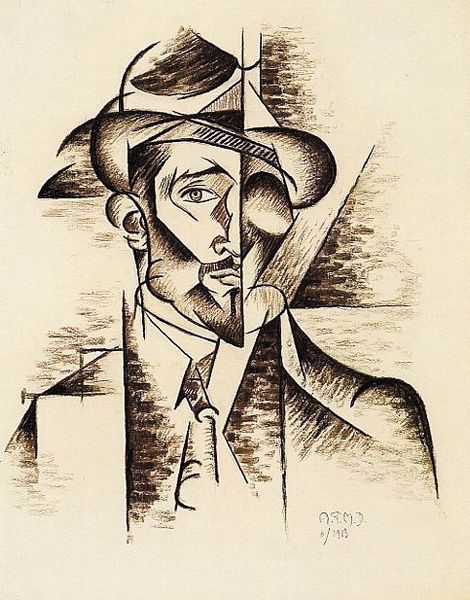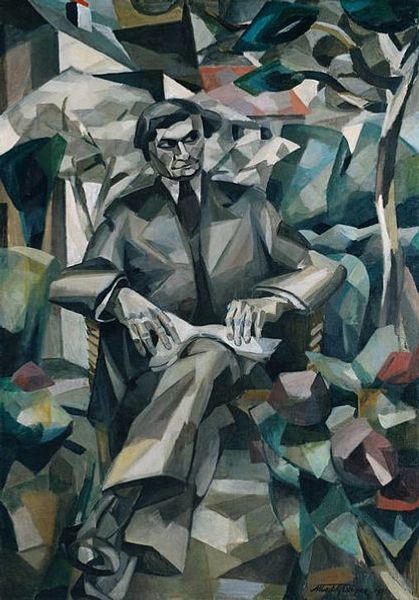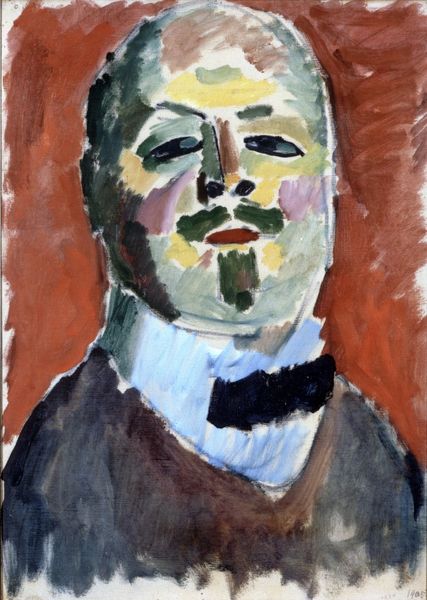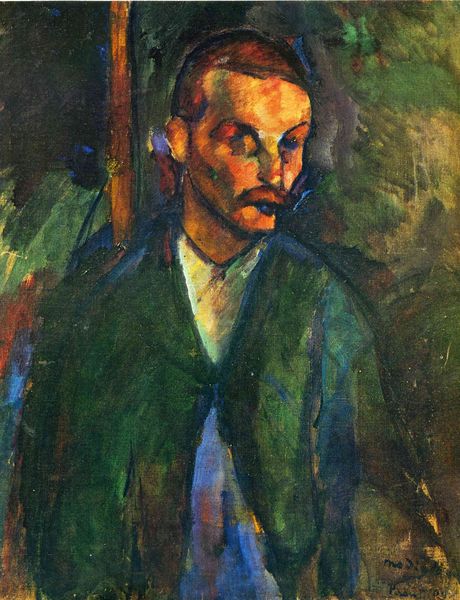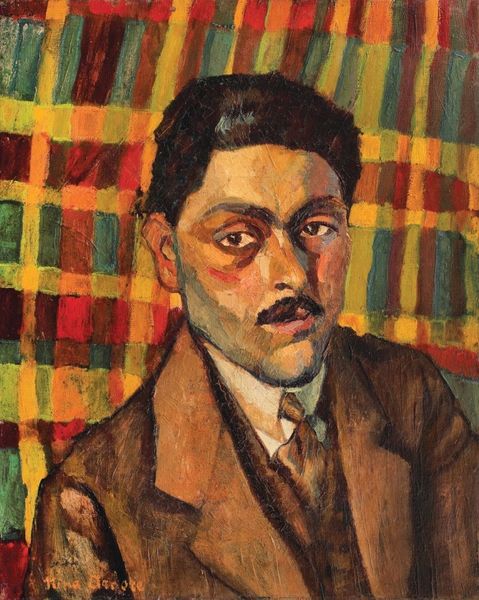
painting, oil-paint
#
portrait
#
cubism
#
painting
#
oil-paint
#
male-portraits
#
modernism
Copyright: Public domain US
Curator: Let’s focus our attention on Picasso’s "Portrait of Manuel Pallares," created in 1909 and currently residing at the Detroit Institute of Arts. He employed oil paint to render this striking likeness. Editor: The first thing that strikes me is its air of contained intensity; there’s a real austerity, yet also warmth, emanating from the subject, especially within that tight pyramidal composition. The ochre palette helps amplify the mood. Curator: Absolutely. It’s crucial to view this portrait within the context of Picasso's development of Cubism. This period was characterized by a shift away from representational art toward abstraction, reflecting profound social and intellectual changes. This work highlights Picasso’s negotiation of identity. Pallares was a close friend and confidant. Editor: Yes, and consider the man's sharply defined moustache; a classic emblem of masculinity in the early 20th century. It suggests dignity and an established societal position. It’s intriguing how Picasso used these carefully chosen symbols of the self. The geometric forms constructing Pallares' face suggest an intellectual dissection, an almost scientific gaze. Curator: His geometrical abstraction transcends the conventions of traditional portraiture. It reflects the modern drive to dismantle old structures, a revolutionary act not only in art but also mirrored in other movements advocating political reforms. In depicting Pallares, was Picasso deconstructing his identity? Editor: Possibly so. Yet, it might equally reflect how artists capture character: exaggerating, distorting to get at an inner truth beyond superficial likeness. The muted coloration feels fitting, as if veiling complexities beneath. But the intense gaze? It seems to transcend historical interpretation and is rather deeply human. Curator: Considering this dialogue between form and identity, it shows us how early Cubism not only shifted how we see but prompted discussions about how identity, friendship and representation are always embedded in shifting power structures. Editor: For me, seeing Pallares through Picasso’s eyes underscores how the iconic transcends historical specifics, conveying enduring character.
Comments
No comments
Be the first to comment and join the conversation on the ultimate creative platform.

